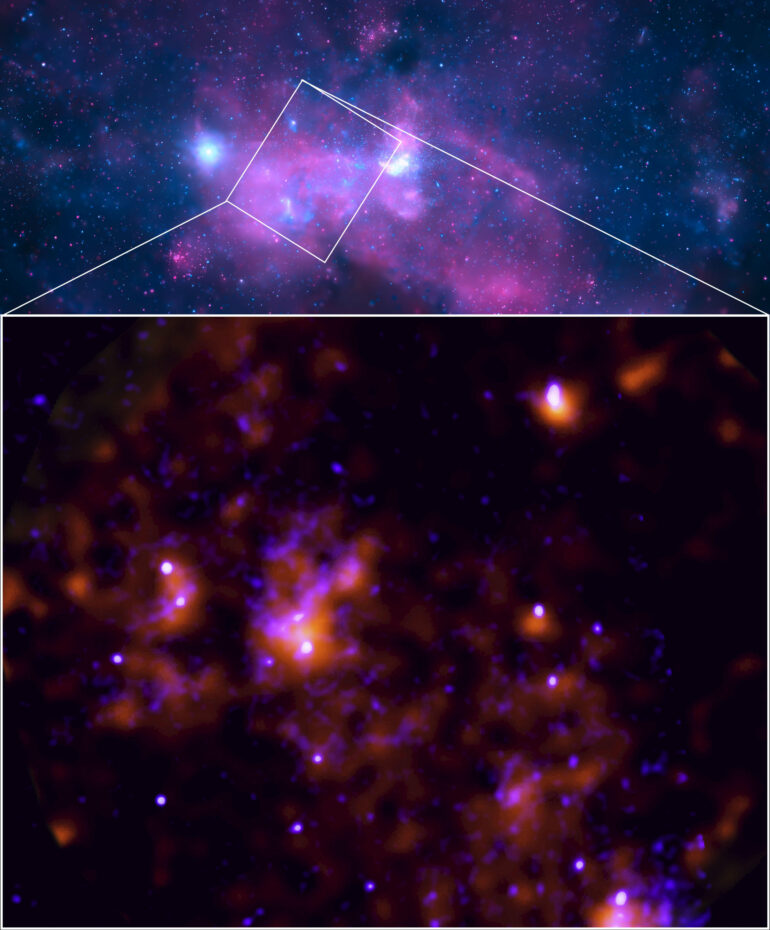An international team of scientists has discovered that Sagittarius A* (Sgr A*), the supermassive black hole at the center of the Milky Way, emerged from a long period of dormancy some 200 years ago.
The team, led by Frédéric Marin, a CNRS researcher at the Astronomical Strasbourg Observatory (CNRS/University of Strasbourg), has revealed the past awakening of this gigantic object, which is four million times more massive than the sun. Their work was published in Nature on June 21.
Over a period of one year at the beginning of the 19th century, the black hole gobbled up cosmic objects that got a little too close to it, before once more entering a state of quiescence. No effect was felt on Earth, as the distance between Sgr A* and our planet is too great (about 2 billion times the distance from the Earth to the sun). However, the X-ray echo detected, which was emitted about 200 years ago, reveals that the original intensity was at least a million times greater than that currently emitted by Sgr A*.
To get an idea of the increase in intensity of the X-ray emission when the black hole emerged from its quiescent state, it is as if a single glow-worm hidden in a forest suddenly became as bright as the sun. These findings explain why galactic molecular clouds near Sgr A* are shining more brightly than usual: it is because they are reflecting the X-rays emitted by Sgr A* 200 years ago.
To carry out their research, the scientists used NASA’s IXPE (Imaging X-ray Polarimetry Explorer) satellite, which was, for the first time, able to detect the polarization of this X-ray light with great precision and also determine its source, something that had previously proved impossible. Rather like a compass, the polarized X-ray light points directly to its source, Sgr A*, even though the latter is now virtually extinct. The scientists are continuing their work on Sgr A* to try to determine the physical mechanisms required for a black hole to switch from a quiescent state to an active one.
Watch the video below to listen the sonification of the detection of an echo emitted by Sgr A* 200 years ago:
More information:
Frédéric Marin et al, X-ray polarization evidence for a 200 years-old flare of Sgr A*, Nature (2023). DOI: 10.1038/s41586-023-06064-x. www.nature.com/articles/s41586-023-06064-x. On arXiv: arxiv.org/abs/2304.06967
Citation:
Detection of an echo emitted by Sagittarius A* 200 years ago (2023, June 21)



